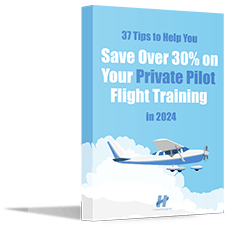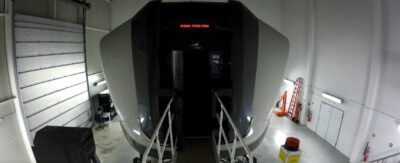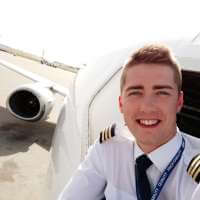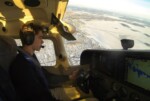Road to the Right Seat 32 – Evaluation
25 July 2017 | Updated on February 05, 2024
This post is part of the story series Road to the Right Seat.
We've all had a crazy childhood dream and mine was becoming an airline pilot. Many young people who aspire a flying career are unaware of the content of flight training and the preparations which are needed. On November 23rd, 2015 I started my ATPL(A) training. Time to realize my childhood dream. I'd like to take you along on an adventure and I'll happily answer all your questions on the way. Let's do this!
View all stories in this seriesJune 11th, 2017 – After a month of hard work but pure enjoyment, I passed the final evaluation on June 9th in the Boeing 737 simulator. The dream is coming closer! It’s time for some more explanation about the exact content of this last part of the program. What an adventure!/b>
Computer Based Training
After the introductory day on May 8th, our first task was watching a lot of CBTs. We were given less than three days to attend 15 hours of online classes. In order to save time and study other things, I worked through them in two days.
Through these online lessons, we learned more about the Boeing 737 systems and how to use them. Since these classes are similar to those of the Type Rating, it was sometimes quite detailed, but additional info won’t hurt.
Technical briefings
During the technical briefings, we discussed the basics of flying jets. Everything is getting faster and so it’s important to always be a few steps ahead. I also had to get used to the complexity of the cockpit, but luckily it went pretty smoothly.
Before I started the training, I flew on Flight Simulator with the PMDG Boeing 737-800, a copy of the real plane. It was, therefore, easier to orient myself in the cockpit as it was no strange environment. A simulator at home on your computer really does help!
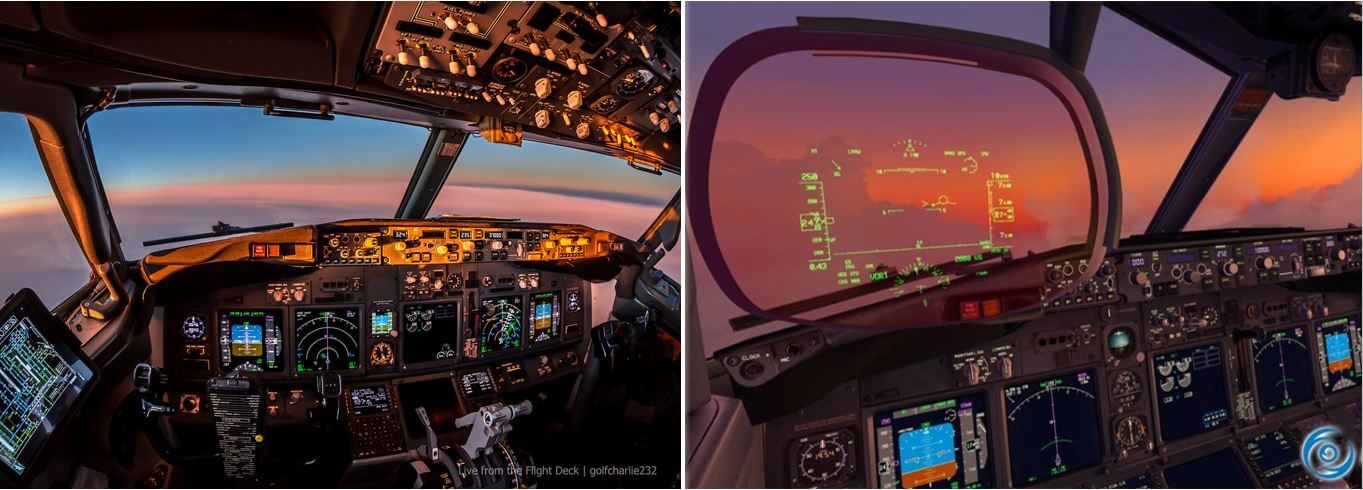

In order to work structurally and create uniformity in the cockpit, we studied the so-called Standard Operating Procedures (SOPs). These are documents that tell us how to perform certain actions and procedures. This way you make sure that everyone speaks the same language in the cockpit and prevent bad communication.
I was told that when you know your SOPs, flying is getting a lot more fun and I can confirm that now. It, therefore, gives you a very nice feeling when you can bring a flight together to a good end.
Crew Resource Management
During our three-day lesson on Crew Resource Management (CRM) we continued working on efficient collaboration in the cockpit. We discussed the importance of SOPs, a good division of tasks, efficient communication, discipline, synergy and so on.
To emphasize the importance of CRM, we did some case studies based on Air Crash Investigation. For example, think about the collision between two 747s in Tenerife on March 27, 1977, where 583 people lost their lives. This crash demonstrates the importance of communication and discipline and was therefore the reoson for some necessary changes in the entire aviation sector.
Procedures trainer
After a few days of theory, it was time for our first practice lesson in the procedure trainer. Here we got to know the 737 tools, the many new systems and of course the cooperation in the cockpit.
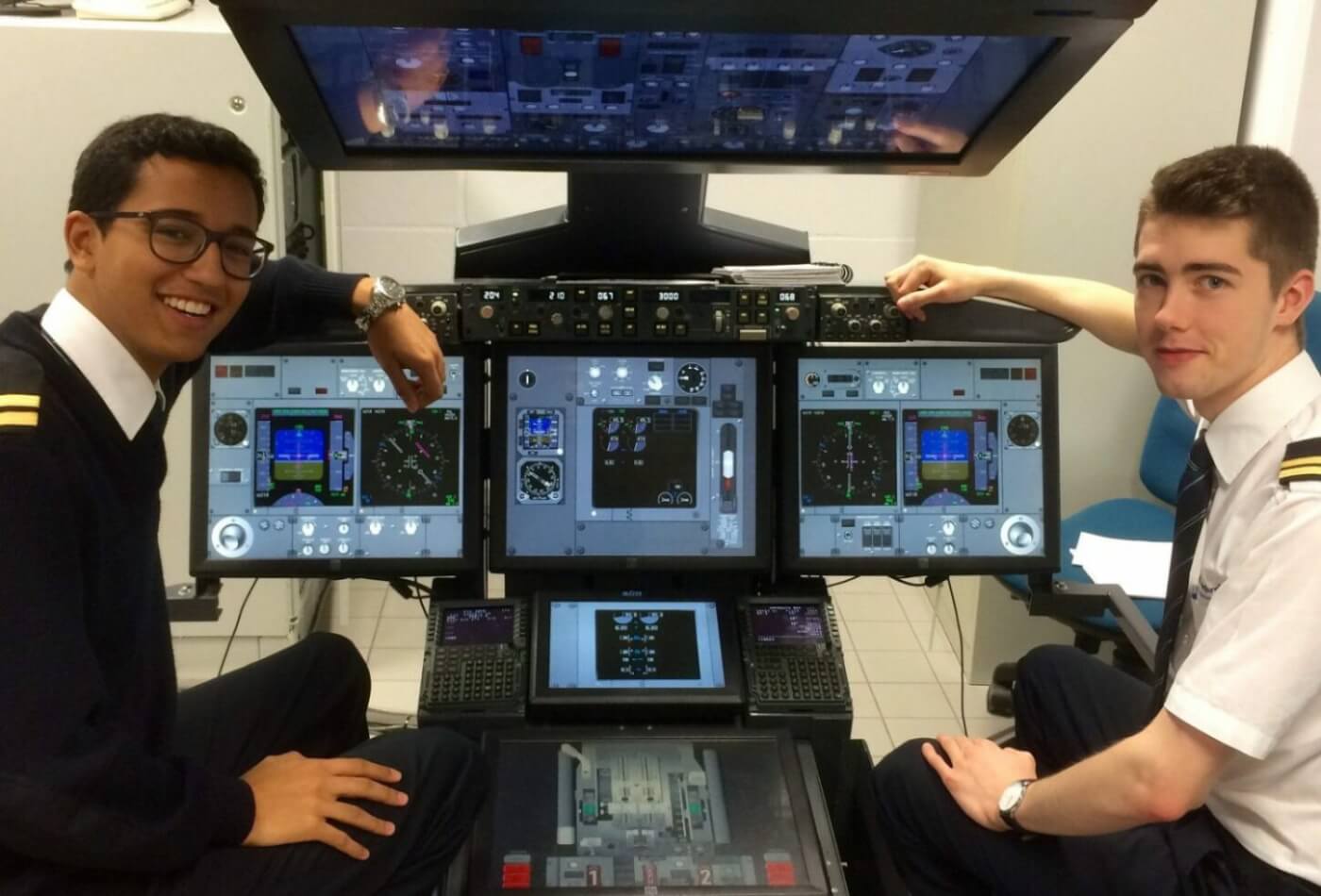

It all seems very simplistic, but it’s not. All systems work properly and it is the perfect way to get to know the layout of the cockpit.
During three consecutive days, we learned a lot about the SOPs and how to correctly apply them during a flight. We also had to complete a small theoretical test to test our knowledge, which consisted of questions about the different procedures.
Fortunately, almost everyone got a top score and so we could start with the best part of the MCC/JOC: the Full Flight Simulator!
The simulator
Undoubtedly the highlight of our training, the real Full Flight Simulator! The simulator is hyper realistic and therefore gives you the feeling that you are really flying. You can feel every bump, the sound is lifelike and the visual aspect is also everything but lacking.
We were trained by two different instructors. One has about 15,000 flying hours and the other 20,000 but had stopped counting. The pressure was quite high, but with the professional guidance of our instructors everything went very smoothly.
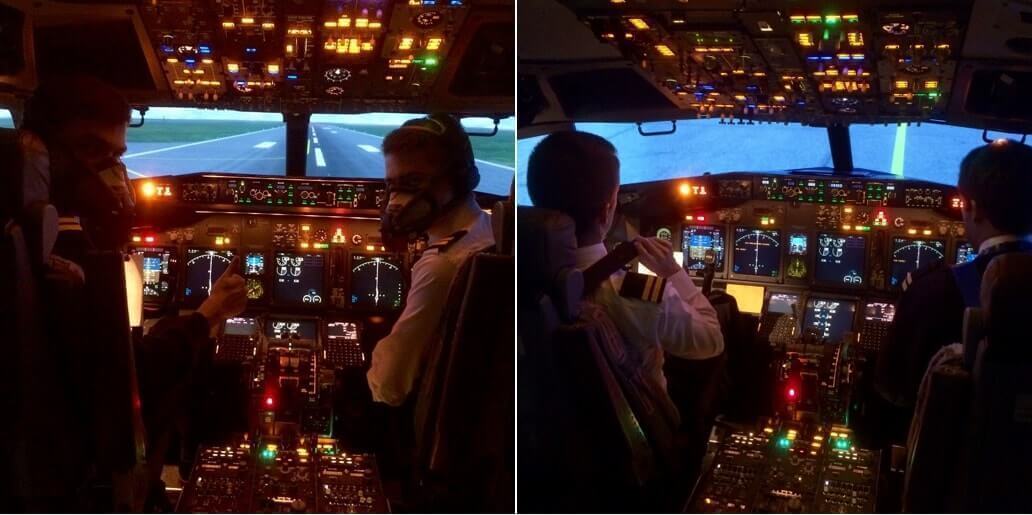

I will never forget the first landings. It just seemed real when I put the plane on the ground for the first time. A phenomenal feeling!
Nine times we went into the simulator and nine times we had the time of our lives. Sometimes all night long and sometimes even before sunrise, but we always came to school for a new learning day!
Evaluation
In order to receive the MCC/JOC certificate, we first had to pass the evaluation flight. During the first flight, I was sitting in the left seat as pilot monitoring and during the second in the right seat as pilot flying.
During the evaluation we reviewed a whole series of exercises. An ordinary navigation, some technical defects, but also emergency situations such as a broken engine. In order to make things even more interesting, the engine obviously always quitted during the most critical moments. Just after the take-off and also during the go-around for example!
These kinds of exercises are, of course, perfect to test us in all areas. Flight skills, navigation, communication, discipline, SOPs, teamwork … Everything had to be done in a smooth and correct way.
After four hours in the simulator, the last landing of the training was a fact!
“Congratulations! Everyone has passed successfully.”
And that was the last step in my training to become a pilot. On June 9, 2017 I graduated … What an indescribable feeling!
Next week, the 33rd and final blog post will follow, in which I’ll completely review the course as a whole. So if you have specific questions, I’d love to hear them! I’ll be happy to answer them next week. See you next week!
This post is part of the story series Road to the Right Seat.
We've all had a crazy childhood dream and mine was becoming an airline pilot. Many young people who aspire a flying career are unaware of the content of flight training and the preparations which are needed. On November 23rd, 2015 I started my ATPL(A) training. Time to realize my childhood dream. I'd like to take you along on an adventure and I'll happily answer all your questions on the way. Let's do this!
View all stories in this series



















